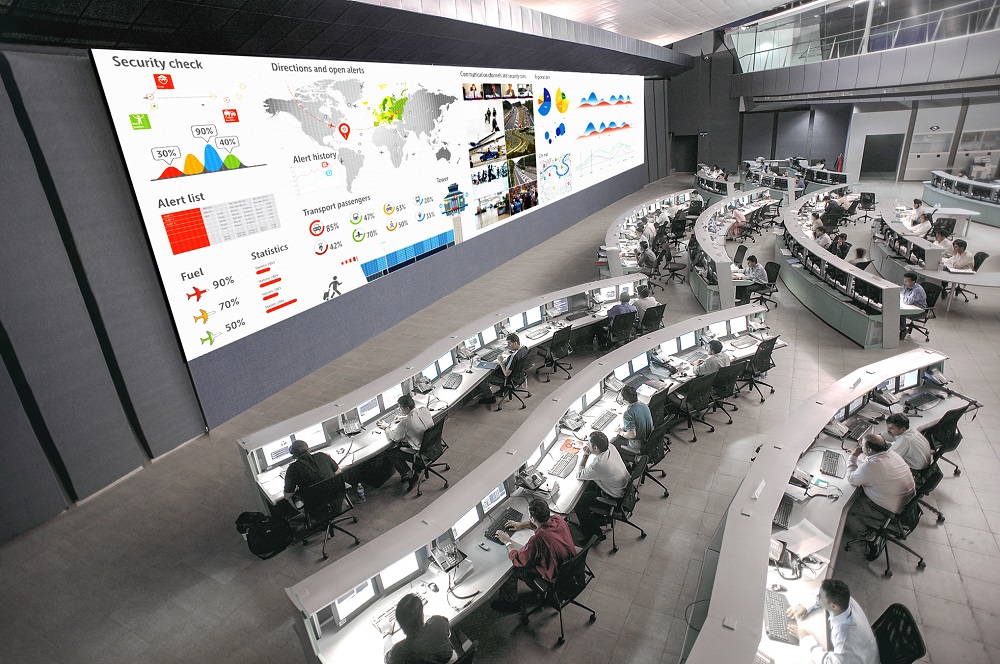At InfoComm 2023, the control-room market received far more attention than it formerly has. Much of that attention is due to the remarkable opportunity that these spaces present to integration businesses. However, some of it is due to the dedicated efforts of Dan Gundry, one of commercial AV’s leading control-room experts and an evangelist for best practices in these environments. Gundry, who works with Barco as senior director of LVX sales – Americas, helped organize the inaugural InfoComm Command-and-Control Meet-Up, which brought together 80 individuals representing 49 companies. Thus, there’s no one better for Commercial Integrator to consult regarding why integrators should consider embracing the control-room market.
Control Rooms Gaining Attention
Gundry begins the discussion by recalling the Vistacom Tech Expo from last autumn, where AVIXA’s CEO, Dave Labuskes, delivered a keynote focusing on the state of the AV industry. Labuskes’ presentation emphasized the significance of control rooms, which piqued Gundry’s interest. Control rooms constitute a thriving $18 billion market, with an annual growth of about 5.5%. According to a survey, control rooms are expected to experience the highest growth in the next three years, surpassing categories like workplace, hybrid, UC&C and esports. Despite the growing buzz, Gundry contends that the AV industry still doesn’t give enough attention to these environments. In this article, we’ll share expertise and best practices so integrators can address this growing market.
Control-Room Trends
Gundry discusses several current trends shaping control-room environments, and many of the trends have their roots in the COVID-19 pandemic. Previously, the market predominantly featured large spaces with numerous people gathered around a sizeable videowall, such as the setups at Massachusetts Bay Transportation Authority (MBTA) command-and-control centers. However, to mitigate pandemic risks, a new strategy emerged: the creation of smaller, dispersed spaces. This approach continues to offer lasting benefits beyond the pandemic, ensuring uninterrupted operations even if one space encounters issues.
Furthermore, there’s an emerging potential for incorporating work-from-home elements into control rooms. This shift requires careful consideration of network, security, ergonomic and human factors. Additionally, we’re witnessing the emergence of diverse control-room variants, such as healthcare and patient-monitoring command centers, real-time crime centers and more.
Gundry advises integrators entering the control-room market to prioritize operator experience and operator responsibility. Every technology deployed should enhance operators’ alertness and efficiency, spanning from videowalls, to desk displays, to technical furniture and beyond.
Designing to Avoid Distraction
Understanding the stakes of control-room operators’ success enables integrators to design spaces optimally, with a primary focus on distraction avoidance. Gundry emphasizes the critical nature of avoiding distractions, as even a split second of missed information could have significant consequences. Therefore, integrators must identify and eliminate potential sources of distraction, such as inconsistencies in brightness levels between desktop monitors and videowalls.
 Control rooms’ unique 24/7 operation presents challenges, requiring integrators to work around operators’ shifts, particularly in traffic-management and security-operations centers. Additionally, room lighting and cable management must be considered to ensure an optimized operator experience.
Control rooms’ unique 24/7 operation presents challenges, requiring integrators to work around operators’ shifts, particularly in traffic-management and security-operations centers. Additionally, room lighting and cable management must be considered to ensure an optimized operator experience.
In addition to design considerations, integrators need to recognize the unique aspects of control rooms as it pertains to sitework. They must also take into account the possibility of conducting team-member background checks when working with clients in electrical utilities, school districts or government agencies. Maintaining continuous communication with clients regarding space availability and technology access is crucial for a successful integration process.
The Services Piece
In the control-room market, continuous uptime is crucial, leading end-user customers to invest in service and support contracts. They recognize the need for 24/7 functioning and fast response times. The typical approach involves immediate action, such as remote troubleshooting, with the integrator adhering to the relevant SLA timing if onsite visits are necessary.
Beyond problem-solving, integrators may have additional service opportunities, including preventive maintenance, system-software updates, compliance and audits, depending on the sub-vertical involved.
Gundry emphasizes the importance of tailoring service offerings to individual client needs; each client’s requirements may vary. Engaging in conversations and asking questions will help the integrator understand the client’s specific service needs and capabilities.
Key Takeaway
If there’s a single takeaway to draw from this, it’s a nuanced one: Control rooms have massive untapped potential for AV integrators, but no one should take serving this vertical lightly. “You need to have a commitment within your team to say, ‘I’m going to invest in understanding this market and engineering, deploying and servicing systems for this market,’” Gundry declares. The integrators whose firms seize this opportunity will enter into these conversations knowledgeable about the vertical and armed with best practices for how to achieve an optimal result. And integrators shouldn’t settle for anything less than optimal — after all, they’re not only professionals who work with these operators but also, in many cases, constituents whom those control-room operators serve.
For a deeper dive into this topic, check out “Best Practices in Control Room Design, Integration and Support,” a presentation that Gundry and Shawn Brady of Winsted will present during the inaugural Commercial Integrator Expo (CIX23) in Denver in September.




